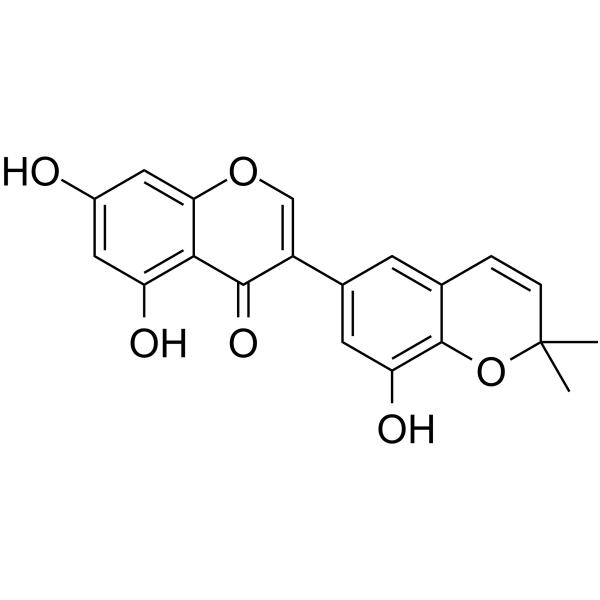
Semilicoisoflavone B
CAS No. 129280-33-7
Semilicoisoflavone B( —— )
Catalog No. M31447 CAS No. 129280-33-7
Semilicoisoflavone B can inhibit sorbitol formation of rat lens incubated with a high concentration of glucose, indicates that it may be effective for preventing osmotic stress in hyperglycemia.
Purity : >98% (HPLC)
 COA
COA
 Datasheet
Datasheet
 HNMR
HNMR
 HPLC
HPLC
 MSDS
MSDS
 Handing Instructions
Handing Instructions
| Size | Price / USD | Stock | Quantity |
| 5MG | 954 | In Stock |


|
| 50MG | Get Quote | In Stock |


|
| 100MG | Get Quote | In Stock |


|
Biological Information
-
Product NameSemilicoisoflavone B
-
NoteResearch use only, not for human use.
-
Brief DescriptionSemilicoisoflavone B can inhibit sorbitol formation of rat lens incubated with a high concentration of glucose, indicates that it may be effective for preventing osmotic stress in hyperglycemia.
-
DescriptionSemilicoisoflavone B can inhibit sorbitol formation of rat lens incubated with a high concentration of glucose, indicates that it may be effective for preventing osmotic stress in hyperglycemia.
-
In Vitro——
-
In Vivo——
-
Synonyms——
-
PathwayOthers
-
TargetOther Targets
-
Recptor——
-
Research Area——
-
Indication——
Chemical Information
-
CAS Number129280-33-7
-
Formula Weight352.3
-
Molecular FormulaC20H16O6
-
Purity>98% (HPLC)
-
SolubilityIn Vitro:?DMSO : 50 mg/mL (141.91 mM)
-
SMILES——
-
Chemical Name——
Shipping & Storage Information
-
Storage(-20℃)
-
ShippingWith Ice Pack
-
Stability≥ 2 years
Reference
molnova catalog



related products
-
Isorhamnetin-3-O-glu...
Isorhamnetin-3-O-glucoside? inhibits the activity of alpha-glucosidase from rat intestine.
-
BLU2864
BLU2864 is an orally active, highly selective, ATP-competitive PRKACA inhibitor with an IC50 of 0.3 nM, exhibiting anti-tumor activity and potential applications in cancer and polycystic kidney disease research .
-
Parimifasor
Parimifasor(LYC-30937-EC, LYC30937) is an orally bioavailable, enteric-coated ATPase modulator as a gut-directed therapy for the treatment of inflammatory bowel disease (IBD).



 Cart
Cart
 sales@molnova.com
sales@molnova.com


